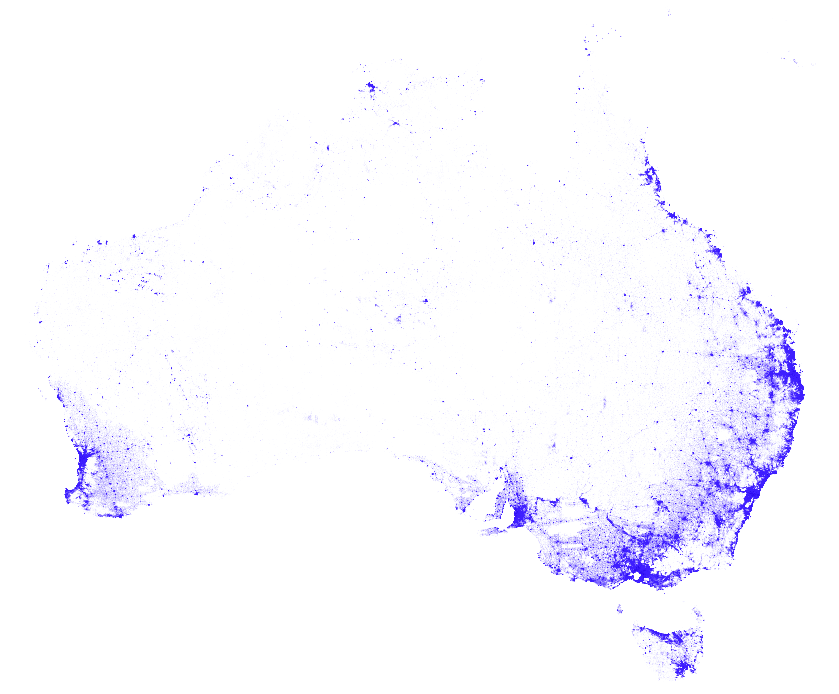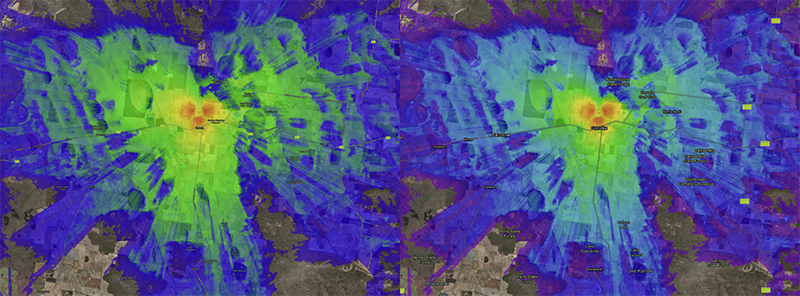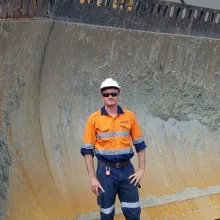Over the coming days Powertec's NCM team will be launching an update to the National Coverage Model. The team has been hard at work implementing a few new features as well as some behind the scenes changes to improve model accuracy. These changes are briefly discussed below.
One-Click Reporting
One of the most heavily requested features by users was the ability to generate a PDF report within the NCM. Until now, users had to reach out to Powertec for the generation of PDF coverage reports for a small fee. Generating a report is now simple and free for Professional subscribers, query the location like normal and you'll notice a green REPORT button on the top left of the sidebar. Clicking it will open a Report View where you can press download to obtain the PDF copy.
Of course, engaging our team for consultancy services remains a great way to obtain signal reports in bulk. Whether 100 or 10,000 sites, just send us your spreadsheet and we'll get to work.

New Buildings
While we endeavour to more frequently update buildings in the future, admittedly it had been a year since our last update and Australia's construction industry is forever hard at work. Our 2023 building dataset used about 11.7 million structures. Our Mid-2024 release contains 12.7 million structures, a substantial increase.
Part of this update also included enhancements to the geometries of metro and urban buildings. We are still not happy with street-level coverage in CBD areas, but work is underway to improve.

Updated Terrain
Like buildings, we're continually modifying our environment. We've made the usual updates, but also improved AI-derived terrain changes in remote areas where LiDAR is not available. This has enhanced the topography of mountains and mine pits, as well as cleaned up some artifacts that occasionally resulted from unusual vegetation features.
Coverage Changes
With the commercial launch of NCM we have begun more frequent updates to mobile coverage. Part of this process has been to expand out-to-sea coverage by expanding the maximum modelling range of each tower. Comparing Telstra from 2023 to 2024, our updates have resulted in an [XXX] km^2 increase in coverage.
Colour Scheme
We've improved the rainbow heatmap to better show the transition between moderate 'green' and weak 'blue' signal. Previously the gradient between the two colours resulted in users having a difficult time determining green-blue from dark blue, due to the way these colours are shown on some screens. To resolve this we've added in a light blue between green and blue to avoid the colour mixing issue. We also increased the gradient between dark blue and purple so that users can better distinguish extremely weak signal areas.

Next Steps
We're tremendously excited for the next set of feature releases. Personally, I am most excited about our work on making an API available. Many users asked about the ability to simulate the loss of a base station (for example, due to natural disaster), as well as place new base stations on the map. Unfortunately due to the substantial computations involved, this type of analysis remains something you'll need to reach out to our team to arrange manually.
As always, we welcome any and all suggestions on what you'd like to see added to the NCM.
